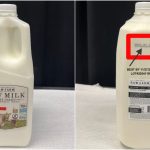Today the en banc U.S. Court of Appeals for the Fifth Circuit held a Bureau of Alcohol, Tobacco, and Firearms regulation extending the federal prohibition on machineguns to “bump stocks” is unlawful, as Eugene noted in a post below. In Cargill v. Garland, the judges split 13-3 on the merits, and the 13 in the majority divided on the rationale. Eight of the judges concluded the statute is unambiguous. Five additional judges concluded that, insofar as the statute is ambiguous, it should be interpreted not to cover bump stocks under the Rule of Lenity.
One aspect of the opinion, that appears to be supported by half of the judges on the en banc court, is that even were the statute ambiguous, it would not merit Chevron deference because the agency had not relied upon Chevron. Seven additional judges further concluded that ATF should not get Chevron deference because the statute imposes criminal penalties and the ATF reversed its prior interpretation of the statute. (Judge Oldham joined the first part of the court’s Chevron discussion, but not the rest.)
From the en banc opinion:
First, Chevron does not apply for the simple reason that the Government does not ask us to apply it. Indeed, the Government affirmatively argued in the district court that Chevron deference is unwarranted. As other jurists have recognized in this context, that means that the Chevron argument has been waived—not merely forfeited. . . .
That would seem to be the end of the inquiry, but we recognize that one of our sister circuits has held that Chevron cannot be waived. Guedes, 920 F.3d at 21–23; see also Gun Owners of America, 19 F.4th at 899 n.5 (White, J., in support of affirmance). To be sure, we have never held in a published case that Chevron must be raised by the Government in order to apply. . . . But the conclusion is obvious, and flows from well-settled waiver principles. After all, that a court should defer to the Government’s expressed interpretation is just a legal argument, and a party waives a legal argument if it fails to raise the argument when presented with the opportunity. . . .
If ordinary waiver principles were not enough, we note also that it would contradict Chevron‘s central justification to defer to the Government’s interpretation without its urging us to do so. The justification is that ‘”policy choices’ should be left to executive branch officials ‘directly accountable to the people.”‘ Guedes, 140 S. Ct. at 790 (Gorsuch, J., statement respecting denial of certiorari) (quoting Epic Systems v. Lewis, 138 S. Ct. 1612, 1630 (2018) and Chevron, 467 U.S. at 865)). Here, the Government made a clear policy choice by declining to seek Chevron deference. The very interest underlying Chevron demands that we respect the Government’s choice and interpret the statute according to traditional principles of statutory interpretation. . . .
For what it’s worth, I think the court is correct on this first point. For Chevron to apply, the agency must conclude that the statute is ambiguous and deliberately exercise the choice to interpret the statute in a particular way. If the agency has not done so, it cannot rely upon Chevron deference.
The court finds additional reasons to reject Chevron.
The Chevron framework does not apply for a second, independent reason: the statute which the Final Rule interprets imposes criminal penalties. As noted above, the primary reason for Chevron is that it allows the executive branch to make policy decisions through the accrued expertise of administrative agencies. But in exchange, Chevron deference shifts the responsibility for lawmaking from the Congress to the Executive, at least in part. That tradeoff cannot be justified for criminal statutes, in which the public’s entitlement to clarity in the law is at its highest. . . .
Finally, we note a third reason why Chevron deference does not apply in these circumstances: that ATF has adopted an interpretive position that is inconsistent with its prior position. To apply Chevron here would contravene one of the rule’s central purposes: “to promote fair notice to those subject to criminal laws.” . . .
If we were required to defer to the Government’s position, the Government could change the scope of criminal liability at any time. Indeed, that is exactly what it has done here. Until 2017, the ATF had never classified non-mechanical bump stocks as machineguns. But now the interpretation is reversed, and the Government would criminalize behavior that it long recognized was lawful. . . .
The concern respecting the consistency of agency regulations is nothing new. Indeed, the Supreme Court has long recognized that an agency interpretation that “conflicts with the agency’s earlierinterpretation is entitled to considerably less deference than a consistently held agency view.” INS v. Cardoza-Fonseca, 480 U.S. 421, 446 n.30 (1987) (internal quotations omitted); . . . The concern is only magnified where, as here, the Government’s interpretation of the underlying statute carries implications for criminal liability. As such, Chevron does not apply because the Government has construed the same statute in two, inconsistent ways at different points in time.
This opinion creates a circuit-split on the validity of the ATF’s regulation, as well as on some of the Chevron issues, so it would seem to be a strong candidate for certiorari, should the government file a petition for Supreme Court review.
The post En Banc Fifth Circuit Denies Chevron Deference to ATF in Bump Stock Case appeared first on Reason.com.






